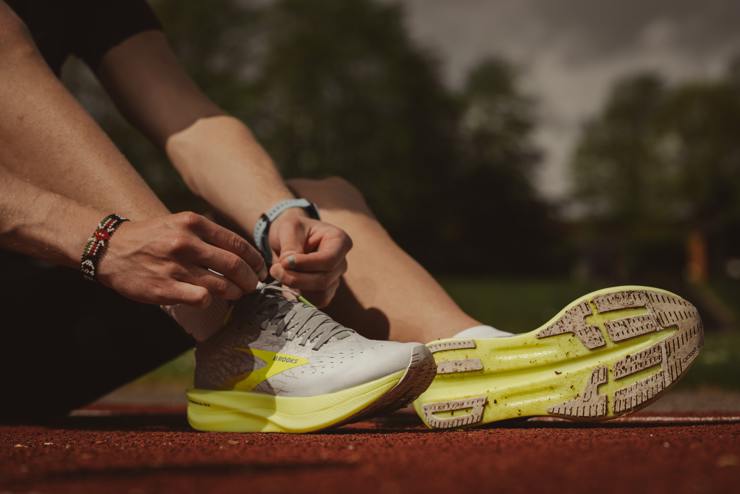Entertainment-E1
Entertainment-E2
Entertainment-E3
5 Top Marketing Strategies for Summer 2020: COVID Edition
Dec 09,2021Make BrandStar Tech Part of Your Success Equation Today!
Dec 16,2021It’s Business as UnUsual: 4 Tips to Adjusting in the Post-COVID World
Jan 06,2021BrandStar Named Advertising Agency of Record for Alan B. Levan | NSU Broward Center of Innovation
BrandStar Studios Invests Millions in Technology and Equipment to Provide Virtual Production, Augmented Reality and Mixed Reality Capabilities in Real-Time
BELatina Merges with BrandStar

In recent years, athletes have become more than just sports icons; they have become cultural icons. With their influence and reach, athletes have the power to sway consumer behavior, making them valuable assets for brands looking to increase their market share. However, not all athlete endorsement deals are created equal. To create a successful partnership, brands and athletes must consider several key elements. In this article, I’ll explore the five essential ingredients that make up a successful athlete endorsement deal.
Selecting the right athlete for an endorsement deal is critical. While it may be tempting to partner with the most popular athlete at the time, the athlete's values and personality should align with the brand's message. Brands must consider several factors before selecting an athlete to represent their product or service. For instance, the athlete's personality, values, and lifestyle should align with the brand's image. Additionally, the athlete's fan base should match the brand's target audience.
A successful athlete endorsement deal depends on several key elements. First, the contract should clearly outline the terms of the partnership, including the scope of the endorsement, the athlete's obligations, and the compensation. Additionally, the contract should include a non-compete clause to protect the brand's interests. This clause prevents the athlete from endorsing similar products or services during the partnership.
Another key element is the creative direction. Brands should work closely with the athlete to develop a campaign that resonates with their audience. The campaign should highlight the athlete's strengths while conveying the brand's message. Additionally, the campaign should be authentic and align with the athlete's values. At Brandstar, we have the unique opportunity of bringing athletes into our studio. This gives us the ability to film a wide range of content that we can use for the brand throughout the year.
Finally, the length of the partnership is also critical. Brands should consider the athlete's career trajectory and their potential for growth. A long-term partnership with a rising star can be more valuable than a short-term deal with a well-established athlete.
Negotiating the terms of an endorsement deal can be a complex process. Both the brand and the athlete must agree on the terms of the partnership, including the compensation, the scope of the endorsement, and the length of the partnership. Additionally, both parties should consider potential risks and liabilities, such as the athlete's behavior, injuries, or legal issues.
To negotiate a successful endorsement deal, both parties should be transparent about their expectations and limitations. Brands should be clear about their budget and the scope of the endorsement, while athletes should be upfront about their availability and their obligations.
One example of a successful negotiation is LeBron James' partnership with Nike. In 2003, Nike signed James to a seven-year, $90 million deal, the largest shoe contract in history at the time. The deal was a significant investment for Nike, but it paid off. James went on to become one of the most successful athletes of his generation, and his partnership with Nike helped the brand solidify its position in the basketball market.
Protecting your brand during an endorsement deal is critical. Brands should consider potential risks and liabilities, such as the athlete's behavior, injuries, or legal issues. Additionally, brands should have a crisis management plan in place in case of negative publicity.
One way to protect your brand is to include a morality clause in the contract. This clause allows the brand to terminate the partnership if the athlete's behavior goes against the brand's values or causes harm to the brand's reputation. Additionally, brands should monitor the athlete's behavior and social media presence to prevent any negative publicity.
There have been several successful athlete endorsement deals over the years. Nike's partnership with Michael Jordan is perhaps the most iconic. The collaboration, which began in 1984, helped Nike become the leading athletic footwear brand in the world. Jordan's signature shoes, which are still popular today, have become a cultural phenomenon, transcending sports and fashion.
Another successful partnership is Serena Williams' collaboration with Gatorade. The brand partnered with Williams in 2015, creating a campaign that celebrated the athlete's resilience and determination. The campaign, which included a video and a limited-edition drink, resonated with Williams' fans and helped Gatorade solidify its position as a sports drink brand.
While athlete endorsement deals can be lucrative and impactful, there are potential risks and pitfalls that brands and athletes should avoid. One common risk is the athlete's behavior. If the athlete engages in controversial or illegal activities, it can harm the brand's reputation and lead to the termination of the partnership.
Another pitfall is the lack of authenticity. If the campaign feels forced or insincere, it can turn off the brand's audience and harm the athlete's reputation. Additionally, brands should avoid partnering with athletes who have a history of endorsing conflicting products or services. At Brandstar, we spend a lot of time understanding the Brand before we rush to find an athlete. It’s kind of like an arranged marriage and we want the Brand and the athlete to live happily ever after.
Measuring the success of an athlete endorsement deal can be challenging. While sales and revenue are critical metrics, they don't always paint a complete picture of the partnership's impact. Brands should also consider other metrics, such as social media engagement, brand awareness, and consumer behavior.
One example of a brand measuring the success of an endorsement deal is Coca-Cola's partnership with Cristiano Ronaldo. In 2019, Coca-Cola launched a campaign featuring Ronaldo, who has a massive social media following. The campaign, which encouraged fans to share photos of themselves with a Coca-Cola bottle, generated over 1.2 million social media impressions and increased Coca-Cola's brand awareness by 4%.
Athlete endorsement deals can be a powerful tool for brands looking to connect with their target audience. By partnering with an athlete, brands can tap into the athlete's influence and reach, increasing their market share and brand awareness. However, to create a successful partnership, brands and athletes must consider several key elements, such as selecting the right athlete, negotiating the terms of the deal, protecting the brand's reputation, and measuring the partnership's impact. With these essential ingredients, brands and athletes can create a winning endorsement deal that is both lucrative and impactful.
If you’re a Brand and you’d like to learn more about athlete endorsement deals, I’d love to speak with you. You can book a time by clicking here.

